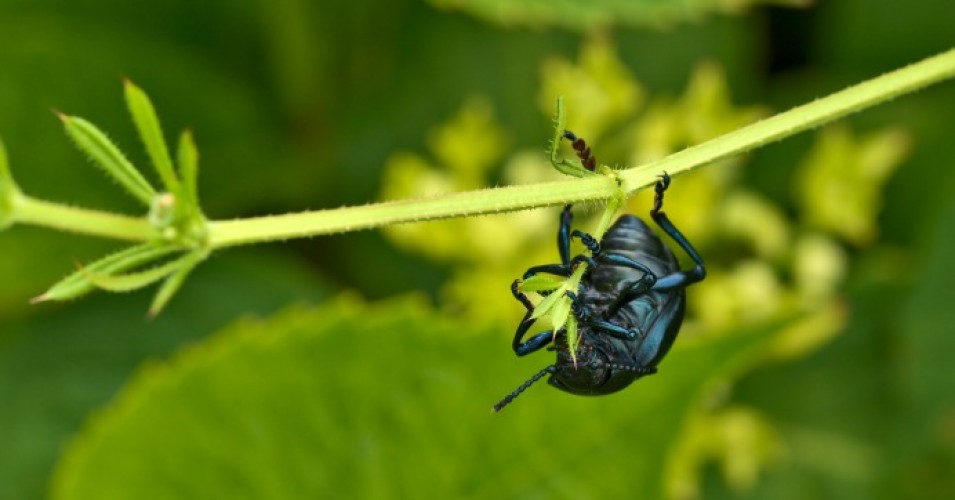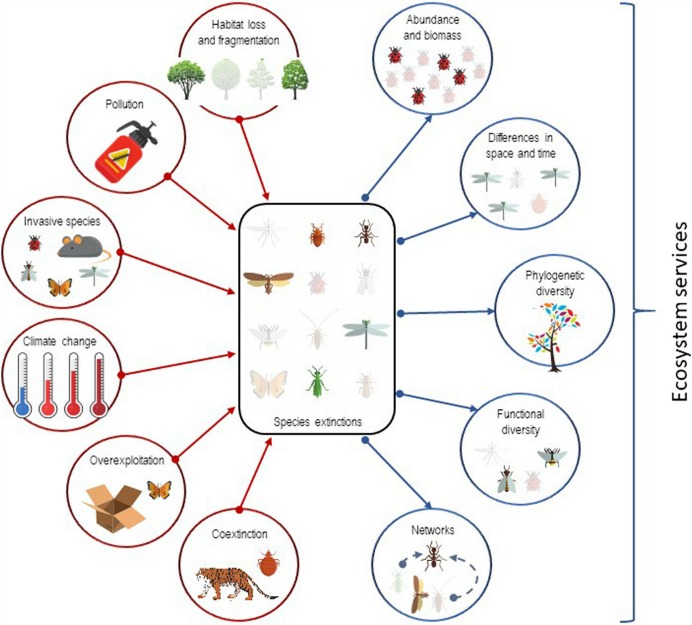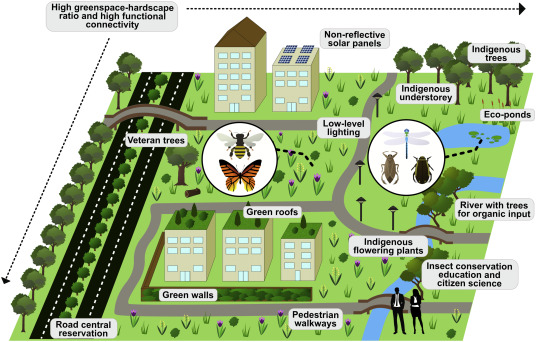Save the Insects, Save Ourselves: Researchers Sound Alarm on Bugpocalypse
ENVIRONMENT, 17 Feb 2020
Andrea Germanos | Common Dreams – TRANSCEND Media Service
New papers detail severe threats facing insects, how their plight is intertwined with humanity’s, and the available solutions to address the crisis.

Though beetles like this are clearly not as adorable as furry animals like koalas, insects’ well-being is linked to our own, and humanity must urgently act to curb their declining numbers, say scientists. (Photo: Peter Stenzel/flickr/cc)
10 Feb 2020 – Global conservation scientists drew renewed attention to the “insect apocalypse” underway with two companion papers published Sunday [9 Feb] underscoring how the fate of human beings and that of insects is intertwined.
Building on the warning to humanity issued in 2017 by over 15,000 scientists—itself an updated warning from 25 years prior from the Union of Concerned Scientists—the researchers outlined what’s driving the insect extinctions.
The root of the problem is clear, said the researchers: “human activity is responsible for almost all current insect population declines and extinctions.”
Those activities take on various forms and can act “synergistically.” They include habitat loss, degradation, and fragmentation; pollution from sources including pesticides, fertilizers, and noise; invasive alien species; the climate crisis; overexploitation that can happen from activities including harvesting insects as pets or food sources; and co-extinction that threatens insects that are co-dependent on vertebrates facing extinction.

Drivers (in red) and consequences (in blue) of insect extinctions.
Graphic from “Scientists’ warning to humanity on insect extinctions”
At risk with these losses is not just the insects’ “innate value”—though that should not be discounted, said the researchers. Much more is at stake. From the paper:
Each species contributes a unique piece to a complex living tapestry that changes in space and time. Each species represents an unrepeatable part of the history of life. In turn, each species also interacts with others and their environment in distinctive ways, weaving a complex network that sustains other species, including us.
Indeed, human reliance on these creatures is immense given the roles they have in seed dispersal, pollination, and soil formation, as well as other roles with a clear monetary value including nature tourism and medical treatments.
And yet, noted the scientists, “there is little knowledge on the functional roles that insects play in many ecosystems, with their values likely greatly underestimated.”
“It is surprising how little we know about biodiversity at a global level, when only about 10 to 20 percent of insect and other invertebrate species have been described and named. And of those with a name, we know little more than a brief morphological description, maybe a part of the genetic code and a single site where it was seen some time ago,” noted co-author Pedro Cardoso from the Finnish Museum of Natural History Luomus, University of Helsinki, Finland.
“Conservation efforts have largely been focused on charismatic megafauna, especially birds and mammals, with little thought on ecosystem connectivity,” the researchers wrote. But “knowledge gaps can be mitigated,” they added, and in fact must be “to conserve insect diversity for our own survival.”

Essential components for urban insect conservation.
From “Solutions for humanity on how to conserve insects”
Avenues for helping to fill the data gaps can come from existing published data from scientific papers, online databases, museums, and citizen science projects.
According to the researchers, the “current extinction crisis is deeply worrisome,” and the time for action is now.
“Many solutions are now available to support insect populations at sustainable levels, especially through preserving and recovering natural habitats, eliminating deleterious agricultural practices including harmful pesticides, implementing measures for avoiding or eliminating the negative impacts of invasive species, taking aggressive steps to reduce greenhouse gas emissions, and curbing the deleterious effects of overexploitation of many taxa,” the researchers added.
The second paper focused on those possible solutions.
For tropic forests, key measures include instituting formal protection of large areas of intact primary forest, connecting high-quality fragmented areas, and restoration of now-degraded ares.
Solutions for low-growth systems—such as savannas, deserts, and heathlands—include creating large-scale conservation corridors and practicing deliberate and careful management.
Conservation of freshwater systems must take place as well, which can be achieved by boosting natural vegetation and heterogeneity. Another change is to shift away from conventional agricultural practices to agro-ecological approaches that include wildflower strips and integrated pest management.
Urban and suburban areas are also key to helping curb insect declines, with increased insect-friendly green spaces such as railway embankments, allotments, and public parks.
Major obstacles remain, noted the researchers, who pointed to global fragmentation of landscapes—a problem worsened by the climate crisis—as well as “the current lack of sufficient collective political will and concerted effort, as with climate change mitigation.”
An essential part of the strategy must be to convey the message to the public that insect conservation is key to our own future survival.
“While small groups of people can impact insect conservation locally, collective consciousness and a globally coordinated effort for species inventorying, monitoring, and conservation is required for large-scale recovery,” said Michael Samways, distinguished professor at Stellenbosch University, South Africa.
________________________________________________________________
Andrea Germanos is senior editor and a staff writer at Common Dreams.
Our work is licensed under a Creative Commons Attribution-Share Alike 3.0 License. Feel free to republish and share widely.
Go to Original – commondreams.org
Tags: Agriculture, Conflict, Environment, Insects Extinction, Science
DISCLAIMER: The statements, views and opinions expressed in pieces republished here are solely those of the authors and do not necessarily represent those of TMS. In accordance with title 17 U.S.C. section 107, this material is distributed without profit to those who have expressed a prior interest in receiving the included information for research and educational purposes. TMS has no affiliation whatsoever with the originator of this article nor is TMS endorsed or sponsored by the originator. “GO TO ORIGINAL” links are provided as a convenience to our readers and allow for verification of authenticity. However, as originating pages are often updated by their originating host sites, the versions posted may not match the versions our readers view when clicking the “GO TO ORIGINAL” links. This site contains copyrighted material the use of which has not always been specifically authorized by the copyright owner. We are making such material available in our efforts to advance understanding of environmental, political, human rights, economic, democracy, scientific, and social justice issues, etc. We believe this constitutes a ‘fair use’ of any such copyrighted material as provided for in section 107 of the US Copyright Law. In accordance with Title 17 U.S.C. Section 107, the material on this site is distributed without profit to those who have expressed a prior interest in receiving the included information for research and educational purposes. For more information go to: http://www.law.cornell.edu/uscode/17/107.shtml. If you wish to use copyrighted material from this site for purposes of your own that go beyond ‘fair use’, you must obtain permission from the copyright owner.